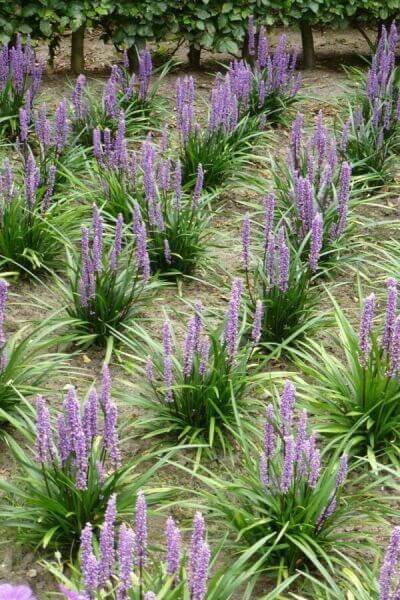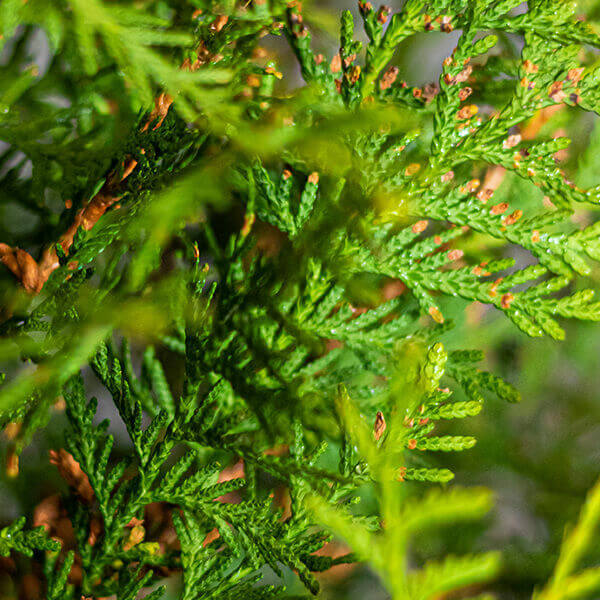Hedge Plants For Creating Shade
Hedge Plants For Creating Shade
Blog Article
Hedge Plants For Creative Landscaping
Enhance your garden's allure with lavish hedge ranges such as Yew (Taxus), Thuja, Laurel, Photinia, and Bamboo, celebrated for their structural stability and environmental advantages.
Yew and Thuja provide evergreen coverage and winter season durability, while Laurel offers fast development and broad, fragrant leaves.
Photinia includes seasonal appeal with its lively red foliage, and Bamboo lends a low-maintenance, peaceful atmosphere.
These hedges improve air quality, minimize sound, and create tranquil, private areas.
Proper planting, spacing, and maintenance make sure energetic growth and ecological consistency.
Explore how these rich ranges can raise your garden's beauty and well-being.
Key Takeaways
Change Your Garden With Lush Hedge Varieties
- Select Yew for its dense, evergreen development and unequaled longevity.
- Choose Laurel for its quick development and broad leaves, making sure quick privacy.
- Pick Photinia for its dynamic seasonal foliage, which turns a striking dark red.
- Make use of Bamboo for a low-maintenance, winter-hardy hedge with aesthetic appeal.
- Space plants 2-3 per meter and prune regularly for ideal development and health.
Popular Hedge Plants
When changing a garden with lavish hedge ranges, it's necessary to consider popular hedge plants such as Yew, Thuja, Laurel, and Photinia due to their unique attributes and advantages.
Yew (Taxus) is extremely respected for its durability and thick, green development, making it a prime choice for enduring landscapes.
Thuja is kept in mind for its evergreen foliage and robust winter season strength.
Photinia includes seasonal vibrancy with red leaves that darken with time, developing vibrant visual appeal.
Laurel uses quick growth and fragrant, broad leaves, ideal for quick privacy.
In Addition, Bamboo is an excellent option for atmosphere, providing a low-maintenance, winter-hardy choice that improves the garden's aesthetic with its sophisticated, swaying canes.
These selections cater to a variety of horticultural needs and choices.
Advantages of Garden Hedges
Garden hedges provide a plethora of advantages, making them an important addition to any landscape. These natural barriers are cost-efficient to execute and offer significant wind security, improving air flow and contributing to noise decrease. The thick foliage of hedges like Thuja and Beech makes sure personal privacy by blocking exposure, creating a secluded and tranquil environment.
Hedges also play an essential function in microclimate policy, providing a steady environment that promotes plant development and lessens temperature fluctuations. Their elaborate leaf structures filter pollutants, enhancing air quality and contributing to a healthier garden environment.
Moreover, hedges stand out in noise decrease, absorbing and deflecting acoustic waves to lower ambient sound levels. This dual performance of providing both visual and acoustic personal privacy improves the overall serenity and visual appeal of any garden.
Planting and Maintenance Tips
For an effective hedge, careful preparation of the planting location is essential. Ensure the soil has appropriate pH and drain to support strong root advancement.
Area the plants appropriately for the chosen types. Water the hedge often during its preliminary development phase, adjusting as required with seasonal modifications.
Implement a systematic insect control and illness avoidance strategy, utilizing chemical or organic treatments when needed. Frequently check for aphids, termites, and fungal infections.
Apply mulch to retain moisture and suppress weeds. Seasonal pruning promotes thick development and air circulation, important for plant health.
Following these guidelines will help you cultivate a dynamic, properly maintained hedge that improves the charm of your garden.
Spacing and Cutting Standards
Spacing and Cutting Standards
Correct spacing and cutting are crucial for cultivating healthy, aesthetically appealing hedges. Appropriate spacing makes sure each plant receives adequate nutrients, light, and air flow.
Follow these standards for optimum hedge upkeep:
- Spacing: Position hedge plants 2-3 plants per meter to motivate robust development.
- Pruning Techniques: Regular pruning is important for preserving preferred hedge height and shape. Trim new growth in summer and cut back older wood during winter.
- Seasonal Care: Adjust cutting schedules and approaches according to seasonal requirements to make sure plant health.
- Hedge Height: Frequently screen and trim to preserve the preferred hedge height and accomplish uniform aesthetic appeals.
Complying with these steps will guarantee your hedge thrives, improving both the appeal and performance of your garden.
Picking the Right Hedge
Selecting the Right Hedge
Choosing the appropriate hedge involves examining aspects such as fully grown height, foliage density, Additional resources and environmental resilience. Effective hedge plant choice needs understanding each types' development characteristics and site-specific flexibility.
For instance, Yew (Taxus) offers exceptional longevity and thick development, while Thuja is notable for its winter strength. Furthermore, considering upkeep requirements is essential; fast-growing species like Laurel or Privet need regular cutting, whereas low-maintenance choices like Bamboo or Ivy may be preferable for those seeking very little upkeep.
Ecological factors such as soil type, light schedule, and moisture conditions must also assist the selection procedure. This careful technique ensures the chosen hedges will prosper, providing both functional and visual benefits to the garden landscape.
Delivery and Planting Advice
To ensure your hedge plants grow, they should be provided by specialized carriers and planted quickly upon arrival.
Follow these vital actions for successful planting:
- Soil Preparation: Enhance the soil with raw material to improve drainage and nutrient material.
- Planting Depth: Develop a trench two times the width and equal to the depth of the root ball.
- Watering Methods: Water completely after planting, keeping the soil consistently damp however not filled.
- Mulching: Use a layer of mulch to retain moisture and reduce weeds.
Customer Support and Service
Given the important role of timely support in horticultural pursuits, our client assistance group is available six days a week through telephone, email, and social networks to provide skilled suggestions and promptly deal with any concerns. Their commitment to quick reaction times ensures customer complete satisfaction by solving questions connected to plant health, ideal planting approaches, and maintenance schedules.

Response Time
-------------------
Telephone
6 days a week
Within 24 hr
This comprehensive support system, enhanced by a stellar 9.3/ 10 customer rating, highlights our commitment to improving the gardening experience for each customer.
Regularly Asked Concerns
The Length Of Time Does It Consider Hedge Plants to Develop?
Hedge plants usually need one to 3 years to end up being totally developed, with the specific period differing by types and growing conditions.
Effective care throughout this important duration is necessary for robust development. Constant watering, watchful weed control, and suitable fertilizer application are critical in promoting strong root development.
For example, fast-growing species like Laurel might develop faster, while slower-growing ranges such as Yew might take longer. Diligent maintenance speeds up the facility procedure, resulting in dense and healthy hedges.
What Are the very best Hedge Plants for Personal Privacy?
The concern of the very best hedge plants for privacy involves examining evergreen and deciduous choices.
Evergreen hedges like Thuja, Laurel, and Cypress offer year-round coverage, ensuring constant personal privacy.
In contrast, deciduous hedges such as Beech offer seasonal personal privacy, shedding leaves in chillier months.
Secret maintenance tips for personal privacy hedges consist of regular cutting, fertilizing in spring, and proper spacing-- normally 2 to 3 plants per meter.
In addition, constant watering and diligent weed elimination are essential for promoting healthy, thick growth.
Can Hedge Plants Attract Wildlife to My Garden?
Yes, hedge plants can draw in wildlife to your garden by providing necessary advantages like shelter, food, and nesting sites, therefore improving local biodiversity. For example, yew, holly, and laurel are outstanding for bring in birds, while ivy supports a variety of pests.
However, it is necessary to note that there are some downsides, such as increased maintenance to handle pests and regular maintenance. Carefully choosing and maintaining hedge varieties can assist balance these advantages and downsides, ultimately fostering a dynamic and sustainable community in your garden.
Exist Any Flowering Hedge Plants Available?
Yes, there are flowering hedge plants offered that can boost the beauty of your garden.
For instance, Elaeagnus, likewise called Olive Willow, produces fragrant white flowers in the fall, adding a touch of elegance.
Photinia, another popular option, showcases vibrant red leaves that develop into an abundant green, creating a dynamic visual impact throughout the seasons.
To make sure these plants grow, it's important to practice appropriate pruning strategies and seasonal upkeep, such as trimming new development in the summer and cutting down in the winter season.
These measures will help maintain the health and aesthetic appeal of your blooming hedges.
How Do I Avoid Bugs in My Hedge Plants?
To avoid bugs in hedge plants, employ natural pest control methods and maintain appropriate hedge care. Introduce useful bugs like ladybugs, which victimize damaging bugs, to develop a well balanced ecosystem.
Regularly inspect your hedges for indications of problem and promptly remove any affected parts to prevent the spread. Ensure the health of your hedges by applying well balanced fertilizers and supplying appropriate water.
Make use of mulching to keep soil moisture and proper spacing to reduce plant tension and promote robust development. These practices collectively assist in lessening insect problems and maintaining a healthy hedge.
Conclusion
In essence, choosing the ideal hedge ranges such as Yew, Thuja, and Laurel can transform any garden into a tranquil sanctuary. These plants offer year-round greenery, boost visual appeal, and offer useful advantages like noise reduction and wind security.
Correct planting strategies, precise spacing, constant watering, and seasonal trimming are vital for optimum development.
Trustworthy delivery services and expert consumer support ensure a smooth experience from purchase to planting, making it simpler than ever to raise your outdoor area.
Garden hedges provide a multitude of advantages, making them a valuable addition to any landscape. These natural barriers are affordable to implement and offer significant wind defense, enhancing air blood circulation and contributing to noise decrease. The dense foliage of hedges like Thuja and Beech guarantees privacy by blocking presence, producing a remote and serene environment.

Pruning Methods: Regular pruning is essential for keeping preferred hedge height and shape. Trim brand-new growth in summer and cut back older wood throughout winter.
Report this page